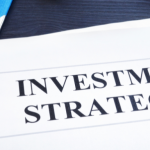Executive Summary
-
Explore how B Corporation has fostered a robust employee-led sustainability culture.
-
Understand the benefits of engaging employees in sustainability initiatives.
-
Discover the challenges and solutions in implementing sustainable practices.
-
Learn through real-world case studies and strategic insights.
-
Access tools and resources to initiate your sustainability journey.
Introduction
In a rapidly changing world, sustainability has become a focal point for businesses looking to ensure long-term viability and social responsibility. Investing in sustainability is not just a trend; it’s a necessity that drives innovation and competitive advantage. For companies like B Corporation, embedding sustainability into their business model isn’t just a top-down initiative; it’s powered by their employees. This article delves into how B Corporation has successfully cultivated a green culture led by its employees, offering valuable insights and practical steps for other businesses aiming to do the same.
Definitions / Context
Sustainability in Business
Refers to the ability of a company to operate in a manner that is environmentally, socially, and economically viable over the long term.
Employee-Led Initiatives
Projects or programs initiated and driven by employees, often supported by management, aimed at achieving specific organizational goals.
Benefits / Pros
-
Increased Engagement and Morale
Employees feel more motivated and valued when they contribute to meaningful sustainability goals. -
Innovation and Efficiency
Employee-driven sustainability efforts often lead to innovative solutions and operational efficiencies. -
Brand Reputation
Companies known for strong sustainability practices attract customers and top talent. -
Cost Savings
Sustainable practices can lead to significant cost reductions in energy, waste, and resource management.
Risks / Cons / Challenges
-
Initial Resistance
Employees may resist change due to a lack of understanding or perceived inconvenience. -
Resource Allocation
Allocating time and money to sustainability initiatives can be challenging for businesses focused on short-term gains. -
Measurement and Reporting
Quantifying the impact of sustainability initiatives can be complex and requires robust metrics and systems.
Step-by-Step Process
How to Encourage Employee-Led Sustainability Initiatives
-
Educate and Inform
Provide training and resources about the importance of sustainability. -
Empower Employees
Create platforms for employees to propose and lead sustainability projects. -
Incentivize Participation
Recognize and reward employees who actively contribute to sustainability goals. -
Set Clear Goals and Metrics
Define what success looks like and how it will be measured. -
Foster a Collaborative Environment
Encourage cross-departmental collaboration to leverage diverse skills and ideas.
B Corporation has implemented an employee-led initiative called “Green Teams,” where employees from various departments collaborate on sustainability projects.
One notable project aimed at reducing office waste resulted in a 30% decrease in waste output within a year.
The initiative sparked greater interdepartmental engagement and inspired further innovations, including digital resource-sharing platforms and energy-saving protocols.
Employees reported higher satisfaction, and the company saw a positive shift in external brand perception.— B Corporation’s Green Culture
Expert Tips / Strategic Insights
-
Epiidosis Recommends: Start small with pilot projects to demonstrate success and build momentum.
-
Regular Communication
Maintain transparency about goals, progress, and setbacks. -
Leverage Technology
Use tools like carbon footprint calculators and sustainability tracking software to monitor progress.
Tools / Resources / Calculators
-
Sustainability Tracking Software
Tools like Ecochain and Sustrana offer comprehensive solutions for tracking and improving your sustainability efforts. -
Carbon Footprint Calculators
Websites like Carbon Trust provide free tools to estimate and reduce your carbon footprint.
Conclusion
Employee-led sustainability initiatives can transform a company’s culture and operational effectiveness. By fostering an inclusive and proactive approach, businesses not only drive sustainability but also enhance employee satisfaction and brand reputation. If you’re considering adopting similar practices, now is the time to act and lead your company towards a sustainable future.



















